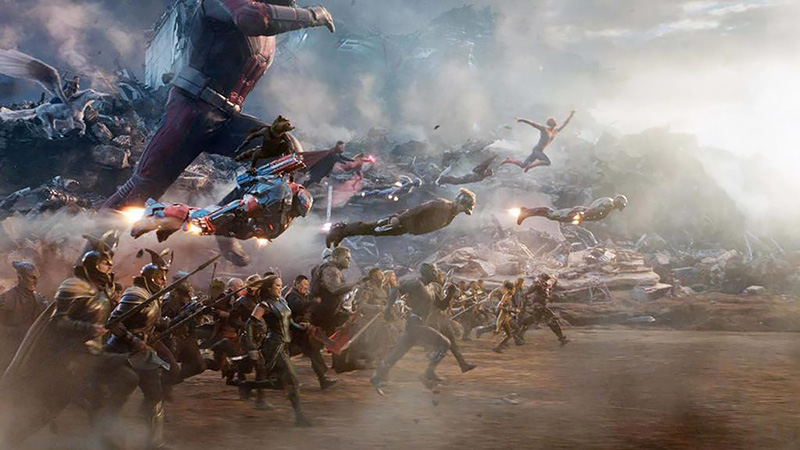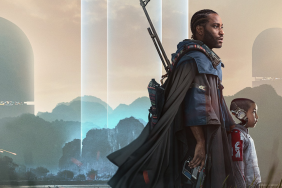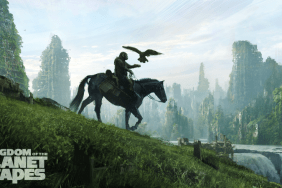2019 was a year when visual effects took on an entirely new dimension, thanks to the photorealistic accomplishments that went beyond “lifelike” to something approaching dark sorcery. This was the year where lions that looked like they came out of a National Geographic documentary sang, actors who had been dead for years gave fully realized performances, and a platoon of superheroes converged to fight the ultimate evil. Visual effects in 2019 were big and cool and totally mind-boggling and even the simplest moments were endlessly fussed over, tinkered with, and tweaked.
RELATED: New The Eternals Set Photos Reveal First Look at Kit Harrington
So you can imagine what a thrill it was to get to spend the day with a number of these talented artists from The Lion King, Alita: Battle Angel, Avengers: Endgame, Captain Marvel, and Star Wars: The Rise of Skywalker. Here we present the biggest reveals, most surprising revelations, and coolest anecdotes from our chat with these wizards of visual effects. Get on your motion capture onesie and get ready for some fascinating insight.
‘Alita’ Was A Surprising Breakthrough for Weta
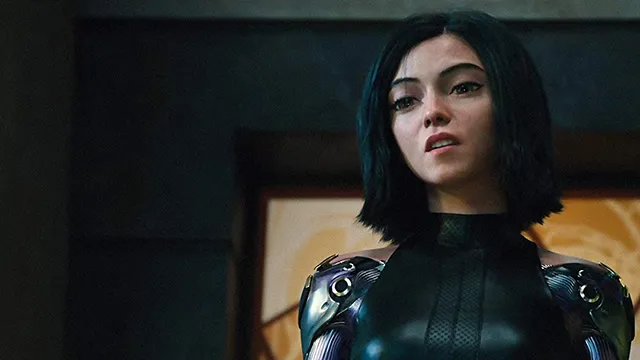
Weta, the New Zealand-based visual effects house responsible for jaw-dropping work on “Lord of the Rings,” “The Hobbit,” “War for the Planet of the Apes,” and James Cameron’s “Avatar,” had a surprising breakthrough working on the Robert Rodrigez, manga-based extravaganza “Alita: Battle Angel.” As Eric Saindon, visual effects supervisor, told us: “Alita was the first humanoid Weta has really had to do. We did the Na’vi, we did Golem, we did Caesar. We’ve done a lot of performance on characters but Alita is one of the very first humanoid characters we’ve brought to the screen, with the exception of Paul Walker for a few scenes in ‘Fast 7’ but this is the first one we’ve done for an hour-and-a-half.”
And it’s true – the Alita effects were humanoid (based on the incredible work done by actress Rosa Salazar) and had to stand up to, as Richard Hollander, VFX Supervisor for Cameron’s Lightstorm Entertainment, said: “In ‘Avatar’ everybody looked the same. Here, we had all this amount of footage, with her face, which is not human, and is right up and kissing humans. We were all aware of the issues with what could come with this.”
The ‘Alita’ Team Couldn’t Have Done It Without Rosa
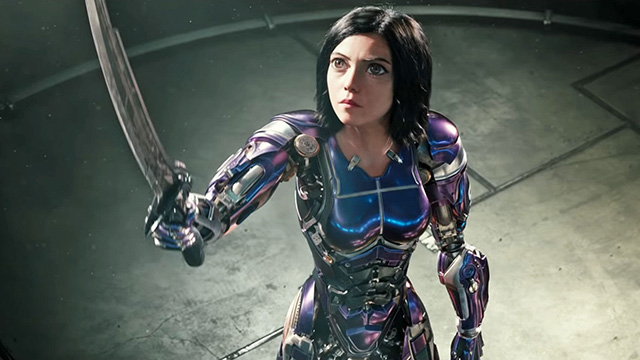
There is widespread debate about the use of performance capture technology and its ability to influence what finally winds up onscreen. Actors tend to think that they do the heavy lifting, even though with any performance capture role that is animated, some keyframe animation will be used and the hard work of dozens of animators will make its way on screen. But what is clear when talking to the “Alita: Battle Angel” team is that Rosa Salaza’s performance was essential to the character of Alita.
Mike Cozens, the animation supervisor, explained: “Each actor has their own thing that they bring to the performance, some of this is conscious and some of it is subconscious. There’s a scene where she smiles when Ito is giving her her name. And as she smiles she does all of this crazy detail that, if I asked a keyframe animator, to come up with that choice, never would they have given me what Rosa gave us in that moment. Having an actor perform through the entire film gives a continuous performance with all this beautiful detail.” Richard Baneham calls this “continuity of performance” a touchstone of the Alita job. “To have a singular actor represent the performance from start to finish, even when we used stunt doubles or keyframe animation, there was always a point of reference with Rosa and Rosa’s performance,” Baneham said. “You’re always staying within the vocabulary of the idiosyncrasies of Rosa’s face and her choices, the language with which she chose to represent that performance.”
Turns Out, Yet Again, Sand Was An Issue for ‘Star Wars’
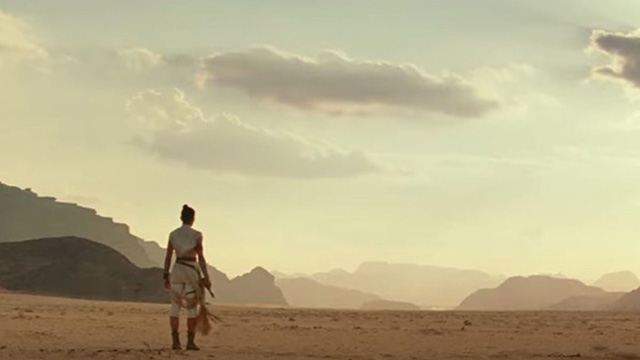
Sure, there were “20,000 ships in battle” (according to visual effects supervisor Roger Guyett) at the end of “Star Wars: The Rise of Skywalker,” according to visual effects supervisor Roger Guyett. But, just as important in the “Star Wars” universe: sand. When we asked if there were any “invisible” effects that folks might not notice, the entire panel of “Star Wars: The Rise of Skywalker” visual effects artists pointed, once again, to that stuff that Anakin can’t stand. “What was amazing for me was being a part of this process, the desert for instance, so much of Jordan isn’t the real environment. That was astounding to me because I was there in Jordan and I can’t tell,” Neal Scanlan, the man behind the creature effects (yes, including Babu Frick) explained. “I think that’s an important thing to shout from the steeple. It’s seamless.”
In particular, many of the artists pointed towards the sequence where Finn (John Boyega), Poe (Oscar Isaac), Rey (Daisy Ridley) and the gang fall through a pit of quicksand into some underground caverns below. Patrick Tubach, ILM visual effects supervisor, elaborated on the black sand moment: ”I was going to say the black sand thing too because people don’t understand how they were going under that sand. That’s because Dom built a physical thing where the actors were going under the sand and we enhanced it later.” The Dom he is referring to is Dominic Tuohy, a special effects supervisor, who explained the process. “The challenge for JJ is to do it all in real-time. So you go to Jordan, we ended up burying six containers in sand because we were using the backdrop as the backdrop,” Tuohy said. “When you’ve got physical effects, you’ve got the real lighting, and you’ve got Roger doing some magic on top. They go through a gap underground.” Again, the Roger he’s referring to is Roger Guyett, who equated the whole scene to an old school magic trick: “It’s really happening. You’re trying to fix the problem but they’re looking at the actors, they’re not studying the beads of the black sand.” See, maybe sand isn’t all bad.
Bringing Carrie Fisher Back Was Even More Complicated Than You Probably Imagined
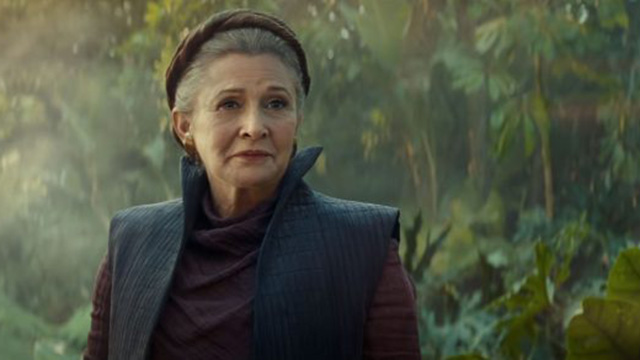
From the outset of production on “Star Wars: The Rise of Skywalker,” director JJ Abrams told the team: “I want to be able to say when you see Leia in the movie, it’s Carrie Fisher.” This, obviously, was a huge challenge for the visual effects team, considering the beloved actress passed away before the opening of the last movie, 2017’s “Star Wars: The Last Jedi.” Industrial Light & Magic visual effects supervisor Patrick Tubach had a surprisingly sunny attitude about the entire process. “I think limitations can lead to breakthroughs,” Tubach said. “Having JJ say that early on to us – ‘Here’s the parameters. I want to use her, I don’t want to change her in any way.’ It put us on a path that was different than what you would have done if somebody said, ‘I don’t care what you have to do, just do it.’ He didn’t say that.”
Visual effects supervisor Roger Guyett explained that there is both more and less of Fisher than you imagine. “It was about worrying about her being completely digital. He knew that we could create a completely digital Carrie but he wanted to be able to say that that performance was Carrie Fisher,” Guyett explained, referring to the all-digital Tarkin ILM created for “Rogue One: A Star Wars Story,” interpolating elements from the long-dead British character actor Peter Cushing. Guyett continued: “So when you see Leia in the movie, it’s a live-action element of her face and everything else is digital.” So the only actual footage of Fisher is her head, which is astounding considering how realistic it looks. Creature creator Neal Scanlan was equally impressed. “Live action from previous footage. So she actually is Leia,” Scanlan said. Guyett reiterated: “You can put your hand on your heart and say: ‘That’s Carrie.’” It really is a feat, brought to life through next-level digital magic and one unbelievable performance.
Maz Was Real This Time
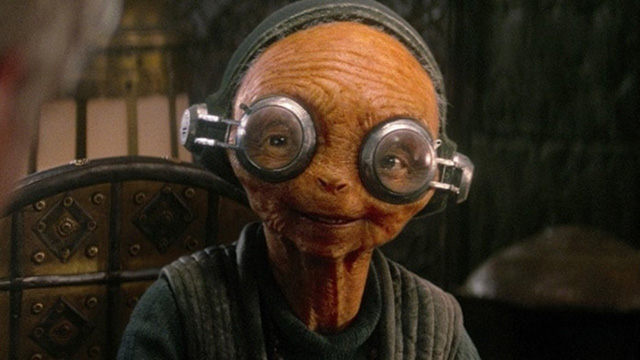
When discussing the ratio between practical creature effects and digital creations in “Star Wars: The Rise of Skywalker,” creature creator Neal Scanlan said that it was a tradition passed down throughout the series that the live-action creatures were not as slick as the digital creations. “It’s really important to the world of ‘Star Wars’ that we make the puppets not necessarily be so realistic; there’s an element of wanting you to know what it is because the theater of ‘Star Wars’ is so wonderful,” Scanlan said. (We immediately thought of Baby Yoda on “The Mandalorian” and how he captured the zeitgeist.) Scanlan continued: “We obviously have to push the technology as far as we could go.” Scanlan then revealed something that we thought but were never quite sure of – Maz (Lupita Nyong’o) “was practical this time.”
“I think it’s the most sophisticated puppet we’ve ever made and she was performed in the most sophisticated way,” Scanlan said. “But later, you could go in there and Roger [Guyett, visual effects supervisor] and the team could change certain aspects … That’s the tradition of ‘Star Wars.’ It uses traditional and cutting-edge technology to give the audience something that is very unique. Nothing is dominant over the other. It’s a coming together to make things work.” Guyett made the connection between another moment in the film when our Resistance heroes are riding horse-like creatures across the surface of a Star Destroyer. There were actual horses, dressed up in prosthetics, that Guyett and his team at Industrial Light & Magic enhanced after the fact. He said the horses were essential to the believability of the sequence. “You’re dealing with the eccentricities of where the horse might wind up. That’s happening in front of you,” Guyett said.
There Were Some Big References on ‘Captain Marvel’
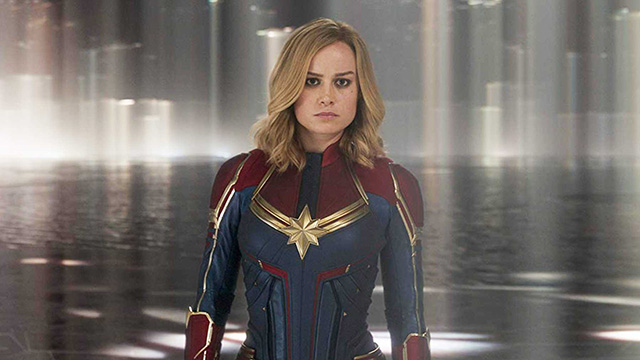
“Captain Marvel” is steeped in nostalgia: for the 1990s and everything contained in that glittery decade, including but not limited to torn jeans, Nine Inch Nails T-shirts, and adrenalized American action cinema. But one sequence looked even further back in the pop culture timeline for inspiration, according to Kevin Souls, visual effects supervisor for the visual effects house Luma. “The codename for the train sequence was ‘The French Connection,’” Souls explained, referencing William Friedkin’s 1971 crime world masterpiece, long remembered for its thrilling chase sequence which saw a detective commandeering a civilian’s car and chasing an elevated train.
“So everyone watched ‘The French Connection’ and a lot of the shots and the composition and the pacing of the sequence was based off of ‘The French Connection’ and was a callback to that.” The entire sequence’s visual vocabulary was based on this sequence, as well. “Intentionally it was to have this more gritty, street-level photographic approach to the train,” Souls said. “There weren’t any smooth drone shots going above the train, it was supposed to be handheld, on the ground, on the train, very attached, very physical.” And just like “The French Connection:” very thrilling.
Young Nick Fury Was a ‘Puzzle’
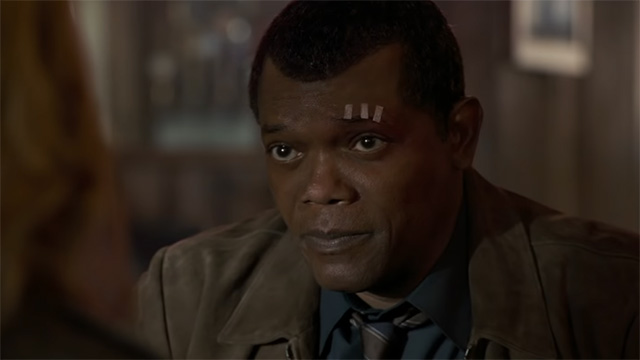
One of the biggest visual effects stories of the year has been the digital de-aging applied to Robert De Niro and Joe Pesci in “The Irishman,” but “Captain Marvel” had an equally impressive (and just-as-flawless) transformation of Samuel L. Jackson into his ‘90s-era self. Janelle Croshaw Ralla, additional visual effects supervisor for Marvel, admitted that the stakes were high. “Whenever you’re doing digital humans, there’s this level of you can’t fail. If you fail with Nick Fury, he’s in the entire film and it ruins the entire movie,” Croshaw Ralla said. “With this, it was very organic. We didn’t have time to have a body double or do anything on set. We let the filmmakers do their thing and accomplished the effect in post. We realized every scene had its own issues, more or less – how he was posed, the lighting, different wardrobes. So we had three vendors in post who worked on the over 500 shots. It became a puzzle. It was important to get all of the shots up to the same level. It was a big exercise in continuity.”
Kevin Souls, a visual effects supervisor for Luma, who worked on sequences that featured the younger version of Jackson’s Nick Fury character, admitted that even he was dazzled. And he knows how the sausage is made. “At a certain point when watching the movie you forget about it,” Souls said. “That’s the biggest compliment that can be paid to a visual effect.”
At One Point ‘Captain Marvel’s’ Ending Was Very Different
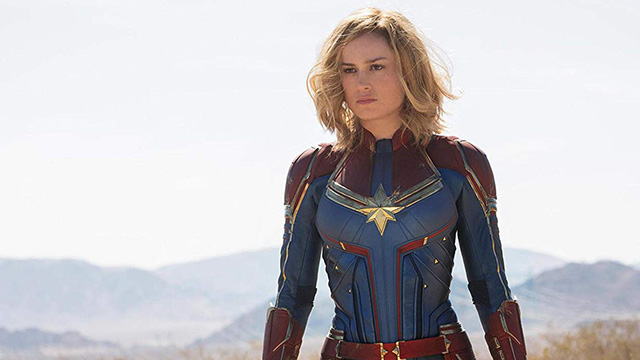
Shannon Justison was the pre-visualization supervisor for studio The Third Floor, and as such was responsible for shaping the look, feel and pacing of giant action set pieces in “Captain Marvel.” (Marvel Studios’ employs the practice of having a number of creative principles sign off on the pre-viz early on, so that there aren’t a ton of questions later in production when the heat is really on.) This also meant that Justison worked on sequences that never made it into the finished film, like a radically altered climax.
“At the end, the whole part with the missiles wasn’t there initially. There were big ships up in the sky and she went up and fought them but they didn’t fire missiles. There was a death ray at one point and then there was a feeling of wait, they’re just hanging out,” Justison said. “There was a need for the ships to be a threat to earth. But it was really down to the wire. It was really late in post, Industrial Light & Magic needed time to make it look great. So we in only a couple of weeks had to shape the whole sequence, design all of these shots, we had a limit of how many shots we could have that was realistic that ILM could finish for the deadline. Because once you get that late in the game no matter how good you are there aren’t enough hours left for you to do these things. We put together all of these sequences to Anna and Ryan, we’d pitch ideas with our hands, trying to keep the energy up and make sure that it blends with everything else.” Whew. Sounds like they pulled off the super-heroic.
The Long Shot in ‘Avengers: Endgame’ Was Meant to Outdo Earlier Shots in the Franchise
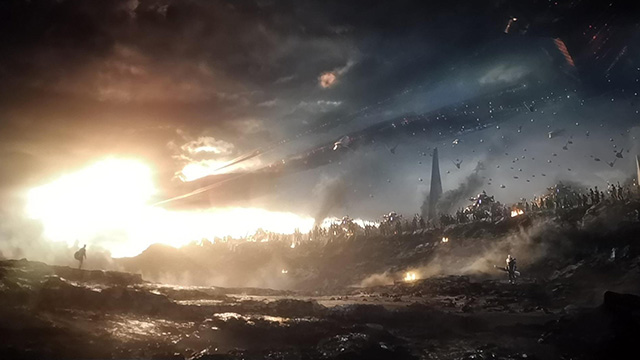
One of the more show-stopping moments in “Avengers: Endgame” comes when the camera runs down a row of our starriest superheroes and follows them as they plunge, headfirst into battle. Heroes join the ground fight, fly overhead, and make the ground shake. Hordes of enemies appear. It is the very definition of epic. And apparently, the shot was meant to pay homage (and outdo) similar shots from “The Avengers” and “Avengers: Age of Ultron,” according to Marvel visual effects supervisor Dan DeLeeuw. “There’s a oner in the final battle that is something Joe Russo looked back on what Joss did on ‘Age of Ultron’ and the first ‘Avengers’ where it’s one continuous shot and it shows all of the heroes and Weta did the same thing for ‘Endgame,’” DeLeeuw said. “We called it, ‘the oner to end all oners,’ and make it as big as we possibly could and fit all of the heroes into the shot and get as many villains and fights into it, was one of the biggest problems to solve.”
And in a way, the scale and complexity of this one-shot spoke to the colossal undertaking of the entire film. DeLeeuw said the hardest part of the movie was “getting it all done.” “It was the biggest thing we’d ever done before. It was a Herculean effort. After everybody finished ‘Infinity War,’ we’d gotten to the point where we were trained,” DeLeeuw said. “This was the biggest thing you’ll probably ever do.” It was also a hugely important movie, according to Matt Aitken, the visual effects supervisor for Weta. “This is going to be one of those signature films of your career, which in many ways will be impossible to top. It’s such a culmination of the 22 MCU films. It was such a privilege to work on it,” Aitken said, before adding: “This one was special.”
Going Back to the ‘Avengers’ Past Was Easier Thanks to Marvel Studios’ Cataloging
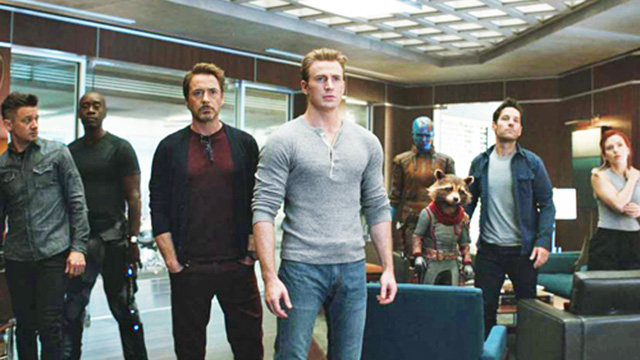
The whole middle section of “Avengers: Endgame” takes our heroes back to earlier episodes in the MCU, whether it’s the Battle of New York that capped the first “Avengers,” Star Lord strutting across an alien landscape in “Guardians of the Galaxy,” or to points unknown in the heroes’ own personal past. This seemed like a huge undertaking but Dan DeLeeuw, Marvel visual effects supervisor, made it sound, if not easy, then a lot less complicated than you probably expected. “For our side, Industrial Light & Magic worked on the big fight sequence in New York and our picture editor Jeff Ford cut it, so he knew what to go back and grab,” DeLeeuw said. “From a technical standpoint, it was about going back and pulling plates. Because we’re Marvel, everything is archived, so you could go back and pull shots directly. And then do some math with the color space. The trick was being able to pull those old resources and use them going forward.” Undeterred, Industrial Light & Magic visual effects supervisor Russell Earl said the process was “more fun than anything else, to go back to those older movies and bring some assets back.”
Still, updating sequences they had done so many years earlier meant that they could mix and match the technology. “We had Hulk from ‘Avengers 1’ and it’s funny because the technology has gotten much better. So we want to go with the old skull with the updated rigging system. But at that point everybody is so used to looking at Smart Hulk, the old Hulk looked a little weird,” Earl said. “I particularly like the shot where they’re down in the alley and old Hulk goes by and Ruffalo as Smart Hulk does his impression of ‘Hulk Smash.’”
There Were Almost Frost Giants
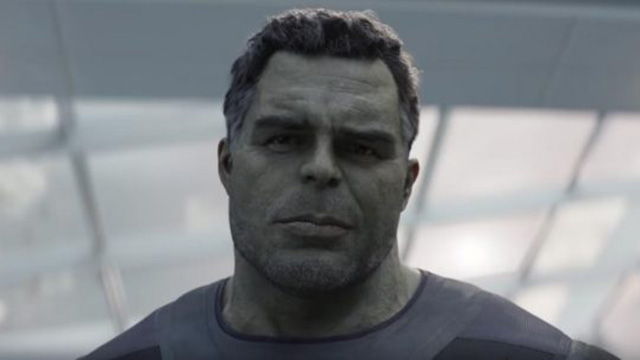
If you thought the final battle in “Avengers: Endgame” was nuts, well, at one point it was even more insane, with the Hulk taking down some of Thor’s old foes. “We had this whole bit pre-viz’d out of Smart Hulk letting Hulk uncork a little bit,” Dan DeLeeuw, Marvel visual effects supervisor revealed. “So there’s a bit with Smart Hulk leaping up and punching frost giants in the face and riding them back to the ground. That’s where I think we jumped the shark a little bit. We showed it to Joe Russo and Joe’s like, ‘Yeah that’s great.’ And Kevin [Feige] said, ‘Um no.’”
The special features on the Blu-ray reveal that there were dark elves that, at one point, were going to be part of Thanos’ army, too.) Oh well. There was also going to be a different introduction for Smart Hulk than what wound up in the movie, that super-charming diner sequence. This earlier introduction involved him “saving everybody from the burning building” (according to DeLeeuw). “It got late in production and everybody was getting tired,” DeLeeuw admitted. Jen Underdah, Marvel visual effects producer, added: “Yeah nobody was sad to see that go.”
Those ‘Avengers’ Time Suits Were A Pain
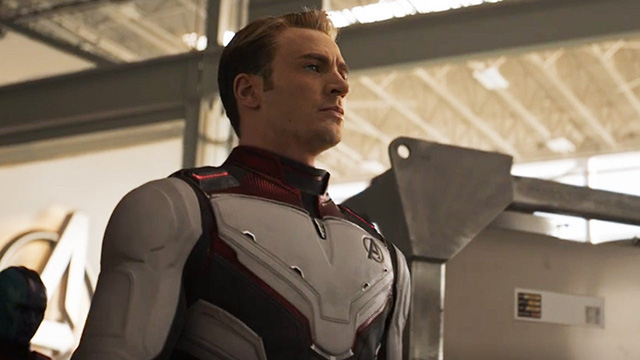
One visual effect in “Avengers: Endgame” that was so invisible people didn’t even understand it until some behind-the-scenes footage was revealed, but the iconic shot of the Avengers walking towards the time machine in their white time suits, was originally shot with the characters just in their costumes. The time suits were added much later in post-production. Jen Underdah, Marvel visual effects producer, admitted that these suits were one of the hardest aspects of “Avengers: Endgame.” “They seem so benign,” she said. “But they were so complicated. To look convincing, it was really hard work. The sheer man-hours to get those right.” Dan DeLeeuw, Marvel visual effects supervisor, said that the reason they shot the actors in their regular costumes had to do with the mechanism of the time suits.
“Since they could turn them on and turn them off, we didn’t know when they would be in the suits,” DeLeeuw said. “For us it seemed safer for them to not be in mo-cap suits, just to have that flexibility. By the time Jeremy Renner was going back in time, we knew they would be in suits and so he was wearing a motion capture outfit, but even then we’d get calls on set like, ‘Well maybe we’ll have him in his costume.’ It became: are we going to have to do a CGI costume of his regular clothes? But he stayed in the time suit the whole time.” Can you imagine if Renner’s civilian clothes would have to have been digitally created? The Internet would have lost its collective mind.
The ‘Lion King’ Team Took Their Aesthetic Constraints Very Serious
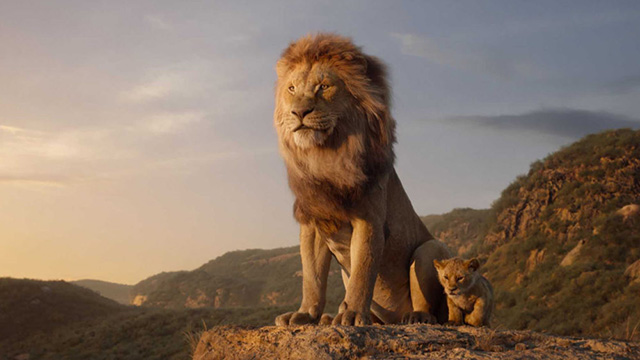
We asked Rob Legato, the visual effects supervisor for “The Lion King,” if he ever wanted to loosen his grip on the ultra-realistic take on the material. For the “Just Can’t Wait to Be King” musical number, for instance, which explodes with color in the original version of the movie. He said “no.” “Then how do you recover from it, once you do that. And once you go down that path, where do you stop? How exaggerated do you make it? And we’re not making the animated version of the movie, we’re making the live-action version. So that was part of the rigid nature of it,” Logato explained. “It starts to lean into, ‘Why are you making this?’ We use the analogy that there’s ‘Lion King’ the animated movie and then there’s the stage depiction, and the sum total is the source material translated to these different venues will give you a different experience but still get the story. So we said, ‘What if it’s real?’” Meow!
The Hardest Character to Define in ‘Lion King’ Might Surprise You
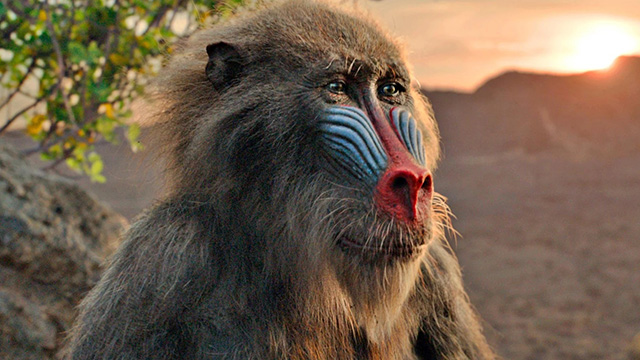
There are dozens of animal characters in the new “Lion King,” from dung beetles to elephants to everything in between (including, of course, plenty of lions). But Rob Legato, visual effects supervisor on the film, admitted there was one character who was more difficult than the others, and his answer might surprise you. “The hardest one was Rafiki. There’s something about too much human is a little odd and too little looks a little odd,” Legato said. “The other animals were easier. But something that is humanoid is harder to do for some reason. Maybe that could have been motion-captured and been a little easier but it was all key-frame animated.”
‘The Lion King’ Isn’t An Animated Movie, At Least According to Those Involved
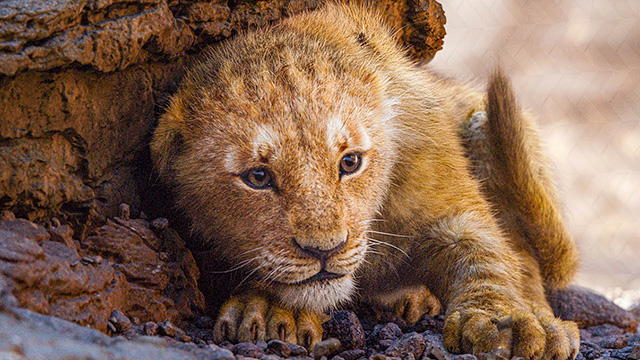
Legato’s last comment about key-frame animation (and the recent Golden Globe nomination for Best Animated Feature), got us wondering about the distinction Disney has gone out of its way to make on “The Lion King,” claiming it is a live-action film. It felt like as good a time as any to ask visual effects supervisor Rob Legato what his take on it was. “We were not making an animated movie, we were making a live-action movie. It used animation tools to create it,” he explained. “If you say ‘What’s your favorite animated movie?’ You’re not going to come up with a movie that looks like ‘The Lion King.’ Our version of it is if nobody knew what we did, you’d assume we had real animals and shot real plates in Africa and somehow made them talk. It’s an aesthetic label. The name belies what it looks like.”
There was even some research that made the production double-down on this stance. Legato continued: “We went to Africa and saw real animals and the real hierarchy and all of that. And it’s like, ‘Well they are talking and communicating. We don’t hear the physical words.’ So if we’re just adding the physical words, we’re adhering to what they would be doing if they could talk.” So there you have it. It’s all there, in the Circle of Life.
